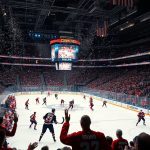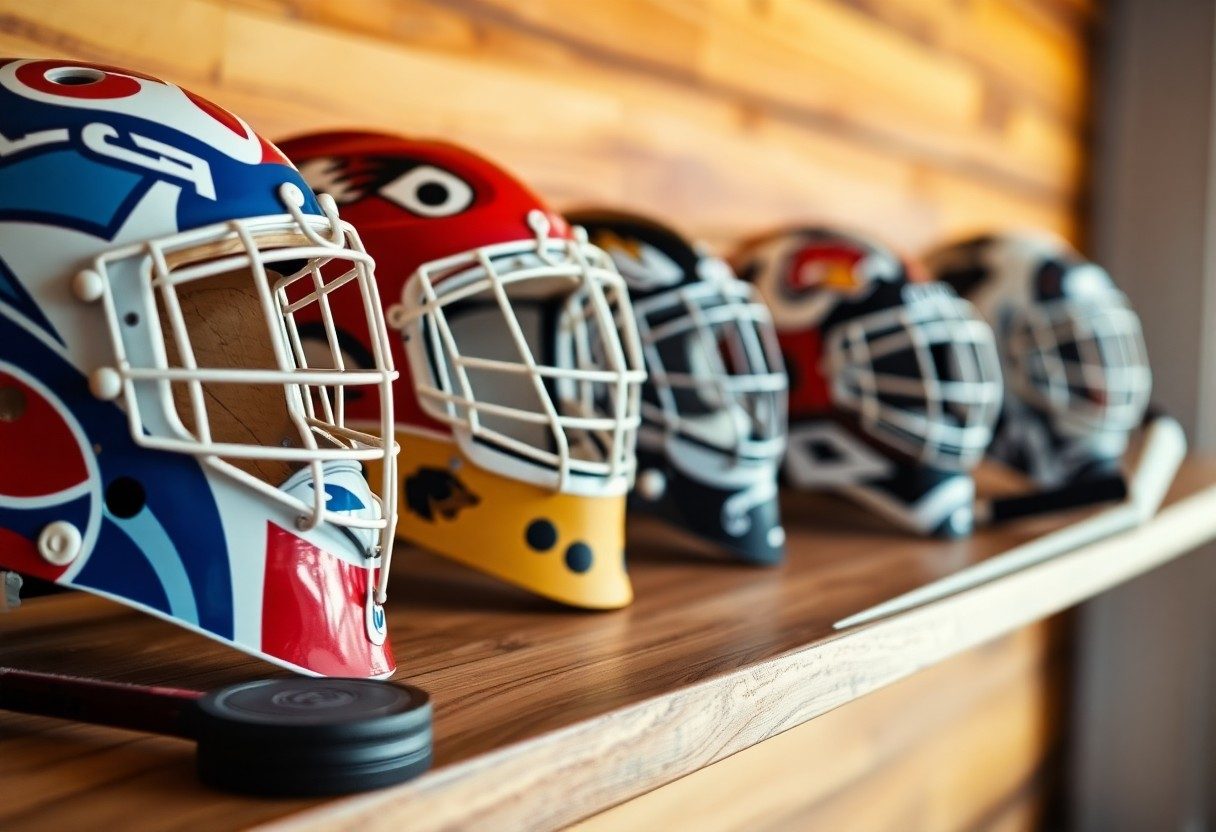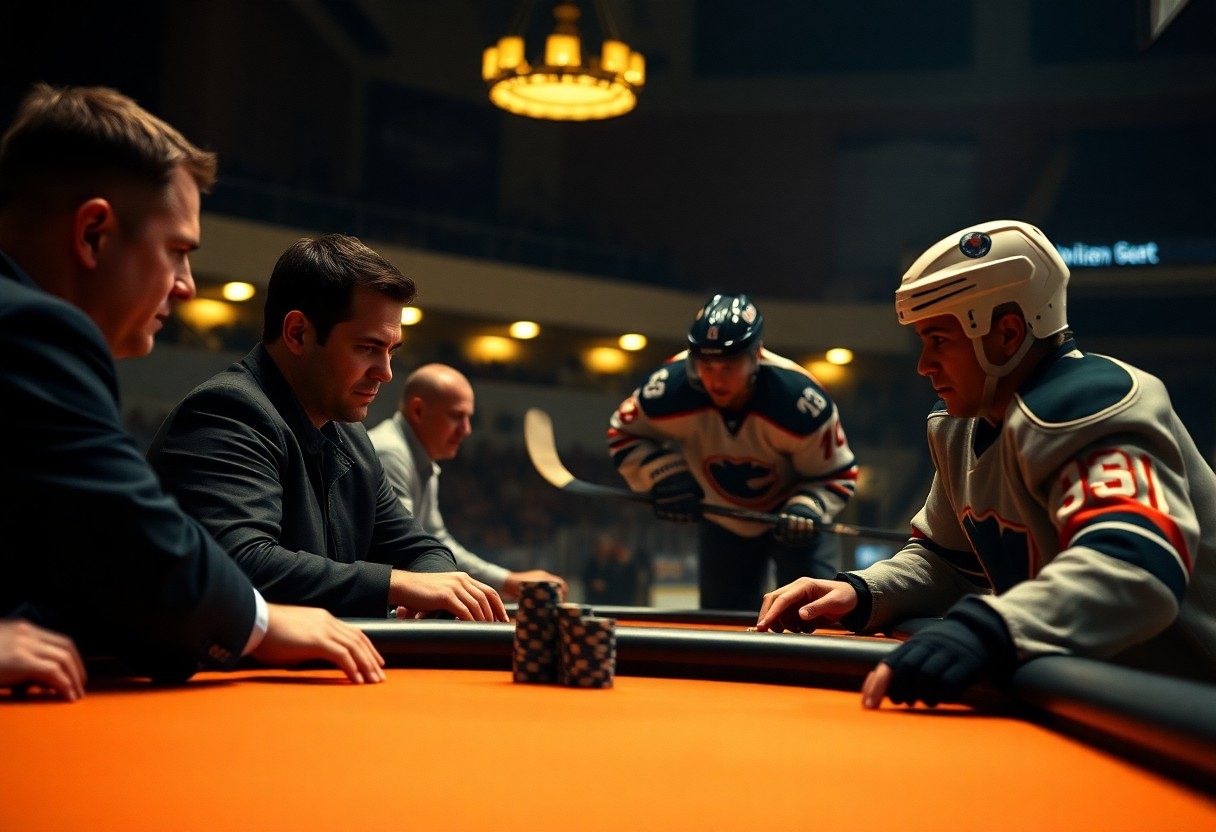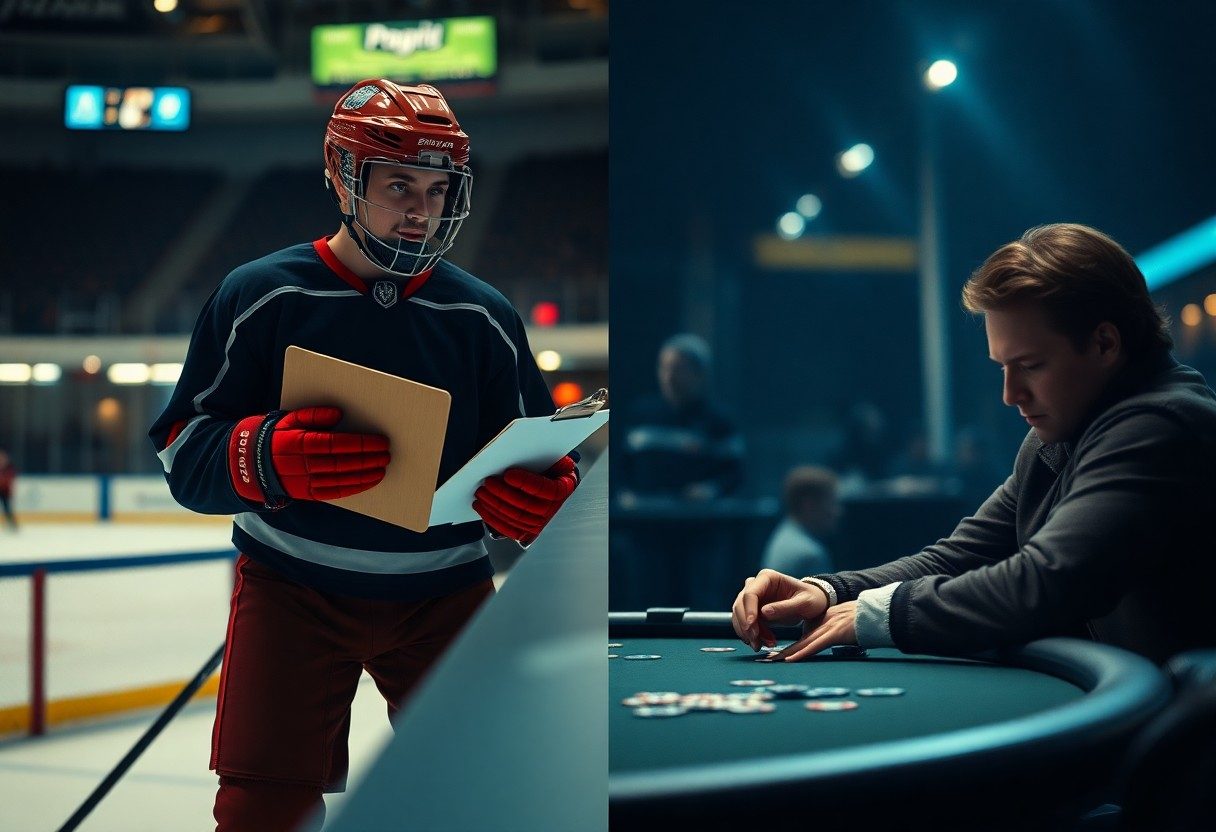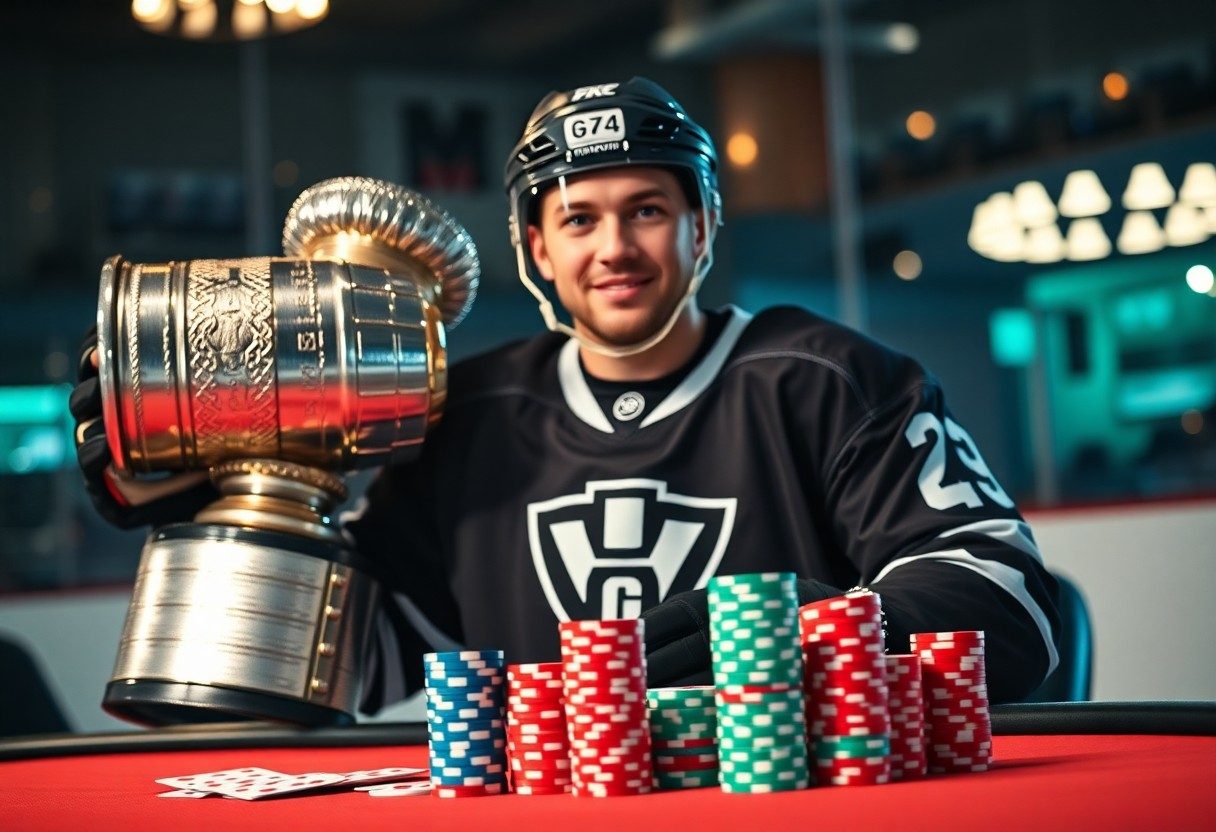Goaltenders have long been the backbone of hockey teams, often making the difference between victory and defeat. In this post, you will explore the illustrious careers of the NHL’s greatest netminders, analyzing their remarkable skills, game-changing saves, and the legendary moments that defined them. From vintage icons to modern-day heroes, this comprehensive overview will help you understand who truly dominated between the pipes and left an indelible mark on the game. Whether you’re a veteran fan or new to the sport, you’re bound to gain insights that will enhance your appreciation for these elite athletes.
The Titans of the Ice: Legendary Goaltenders
Throughout NHL history, select goaltenders have etched their names into the annals of the sport, showcasing remarkable talent, poise, and a fierce competitive spirit. Icons like Jacques Plante, Patrick Roy, and Dominik Hasek transformed the position, redefining expectations with their unique styles and unparalleled skills. These titans not only provided unwavering defense against relentless offenses but also inspired generations of players and fans alike, solidifying their legacies as legends of the ice.
Analyzing the Unmatched Records of Goaltending Greats
Your understanding of goaltending greatness is incomplete without recognizing the astonishing records set by various NHL legends. From Marc-Andre Fleury’s all-time wins to the legendary Ken Dryden’s playoff performance, each great has left distinct imprints in the form of stats that highlight their prowess. These records not only encompass traditional metrics like save percentage and goals against average but also reflect remarkable playoff moments that transformed the course of hockey history.
The Impact of Rule Changes on Goalies Throughout History
Over the decades, rule changes have significantly influenced the role and effectiveness of goaltenders in the NHL. Modified crease rules, the introduction of the trapezoid behind the net, and adjustments to equipment sizes have all shifted how goalies operate on the ice. For instance, the reduction in allowed equipment sizes in recent years challenged goaltenders to adapt their techniques, highlighting the need for finesse and agility as styles of play evolved.
Historically, rule changes have often aimed to increase scoring, consequently placing added pressure on goalies. The implementation of the two-line pass and the reduction of contact allowed in the crease pushed goaltenders to innovate, leading to the rise of butterfly and hybrid styles that dominate today’s game. Notably, the NHL’s focus on player safety has resulted in stricter penalties for collisions, altering how goaltenders approach their crease with a newfound emphasis on lateral movement and positioning. This ongoing evolution showcases the resilience and adaptability crucial for success between the pipes.
Skill Sets that Define Greatness: What Makes the Best Goaltenders?
Great goaltenders possess a unique blend of skills that set them apart from the rest. They exhibit exceptional technical prowess, topped with unparalleled athleticism, and the ability to perform under immense pressure. You will find that the best goaltenders combine quick reflexes, precise positioning, and keen game awareness, allowing them to anticipate plays and react instantly to threats. Balancing physical skill with mental fortitude elevates these athletes to legendary status, making them invaluable to their teams.
Exclusive Attributes: Speed, Reflexes, and Agility
The best goaltenders showcase remarkable speed, reflexes, and agility, attributes that allow them to swiftly adapt to the fast-paced nature of hockey. They often make saves that seem improbable, relying on lightning-fast reactions and footwork. Whether it’s sliding across the crease or diving to deflect a shot, these skills demonstrate how you can impact the game’s outcome by minimizing scoring opportunities against you.
The Mental Game: Concentration and Decision-Making Under Pressure
Your mental acuity is just as vital as physical talent in goaltending. The best goalies maintain laser focus, ensuring they can analyze plays and act decisively, even under intense pressure. It’s not uncommon for top goaltenders to face a barrage of shots in critical game moments. Those who excel have honed their concentration and can make split-second decisions, often reading the offensive plays before they unfold and confidently executing the right moves when it matters most. This mental discipline not only enhances their performance but also boosts the confidence of their teammates.
The ability to stay composed while under fire separates the elite from the rest. For instance, consider how legendary goaltenders like Patrick Roy and Martin Brodeur faced down high-pressure playoff scenarios, not allowing the weight of the moment to affect their performance. By cultivating a strong mental game, you can improve your own goaltending performance, as decisions made under duress will often determine the outcome of a game. With psychological resilience, you’ll find that overcoming the mental hurdles can elevate your game to new heights.
The Evolution of Goaltending Styles: From Stand-Up to Butterfly
Your understanding of goaltending techniques must take into account the dramatic evolution from the traditional stand-up style to the modern butterfly approach. Initially, goaltenders predominantly relied on their ability to position themselves upright, using their body to block shots. As offensive strategies became more sophisticated, so too did the need for goalies to adopt new techniques — the butterfly style emerged, emphasizing low, wide stances that cover more of the net. This shift not only revolutionized goaltending mechanics but also transformed the entire defensive game in hockey.
The Transition in Techniques and Strategies Over Decades
Iconic Goaltenders and Their Unique Approaches
Throughout hockey history, certain goaltenders have distinguished themselves with their signature techniques. Take Dominik Hasek, for example; his unorthodox style involved dropping to his knees and flailing his limbs in unexpected ways, making him nearly impossible to read. In contrast, Patrick Roy popularized the butterfly technique, expertly using his pads to seal the bottom of the net while maintaining an active upper body. These approaches not only influenced their individual success but also left lasting impressions on the techniques of future generations of goaltenders.
Hasek’s unrestrained athleticism combined with an unpredictable nature made him a formidable adversary, challenging opponents with his unconventional saves. Meanwhile, Roy’s butterfly style became a blueprint for countless young goaltenders aiming for success in the NHL. Even contemporary players like Carey Price and Andrei Vasilevskiy have drawn inspiration from both of these legends, incorporating elements of their techniques into their own styles. Ultimately, these iconic goaltenders have not only showcased exceptional talent but also acted as catalysts for the evolution of goaltending strategies, shaping how the position is played today.
Unraveling Team Dynamics: How Great Goalies Influence Their Teams
The impact of a great goalie extends beyond eye-catching saves; it’s about the holistic atmosphere they create. Your goaltender serves as a focal point during games, generating confidence among defensemen and inspiring forwards to elevate their performance. A skilled goalie can shift the momentum of a game and even a season, providing not just security in the net but also unity in the locker room, forging a collective identity among teammates.
The Correlation Between Goalie Performance and Team Success
Your goaltender’s performance directly correlates with the team’s success. Statistical analysis shows that teams featuring elite goaltending consistently outperform opponents, especially in tight playoff scenarios where every save counts. The 2018 Washington Capitals, led by standout goalie Braden Holtby, exemplified this correlation, as his remarkable saves propelled the team to their first Stanley Cup in franchise history.
Leadership Roles and Their Importance in the Locker Room
A goalie often embodies the leadership roles that can make or break a team’s dynamics. Traditionally, they are the last line of defense and serve as a calming presence when the pressure mounts. Goalies like Martin Brodeur and Patrick Roy not only showcased their skills on the ice but also nurtured team morale and communication off it, creating an environment where players thrived together.
Having a goalie with strong leadership skills bolsters overall team cohesion. Your goalie can act as a mediator between players, fostering communication during tense moments. For instance, during the 2001 playoffs, Patrick Roy’s calm demeanor and ability to rally teammates contributed significantly to the Colorado Avalanche’s late-game comebacks. Effective leaders like him can instill confidence in their teammates, enhancing performance and increasing the chances of success in critical matchups.
Figureheads of a Generation: How Today’s Goaltenders Compare to the Legends
| Today’s Goaltenders | Legends |
|---|---|
| Andrei Vasilevskiy | Dominik Hasek |
| Connor Hellebuyck | Patrick Roy |
| Carter Hart | Martin Brodeur |
| Igor Shesterkin | Grant Fuhr |
An Examination of Current Standouts and Their Potential Legacy
Current goaltenders like Andrei Vasilevskiy and Connor Hellebuyck are redefining what it means to be elite in the NHL. Vasilevskiy’s athleticism and poise have led him to multiple All-Star selections and a Stanley Cup championship with the Tampa Bay Lightning. Hellebuyck, on the other hand, boasts impressive stats, consistently ranking among the league leaders in save percentage and shutouts. Both players have the potential to leave a lasting legacy that could be compared to greats like Patrick Roy and Dominik Hasek.
The Future of Goaltending: Trends to Watch in the Coming Years
Innovations in equipment and training are evolving the playstyle of goaltenders in today’s NHL. With advanced analytics, goalies are better equipped to understand their positioning and anticipate shooters’ moves. Additionally, the increasing emphasis on mental preparedness is fostering a new breed of goaltenders who excel under pressure. Teams are prioritizing dynamic, agile goaltenders over traditional larger frames, indicating a shift in scouting and training philosophies.
In the coming years, you can expect to see more hybrid techniques combining stand-up and butterfly styles as coaches encourage adaptability. The influence of technology such as VR training is set to revolutionize how keepers prepare for gameplay, allowing for simulated experiences that enhance reaction times and decision-making skills. Additionally, smaller sizes and improved agility in gear continue to promote faster and more unique saves, making the role of the goaltender more thrilling and unpredictable.
Conclusion
Now that you’ve explored the best NHL goaltenders of all time, you can appreciate the diverse talent that has defined the position. From towering figures who changed the game’s landscape to those whose incredible skills have left an indelible mark, these athletes have shown you what it means to dominate between the pipes. As you reflect on their legacies, consider how their styles and accomplishments have influenced modern goaltending and continue to inspire players today.





